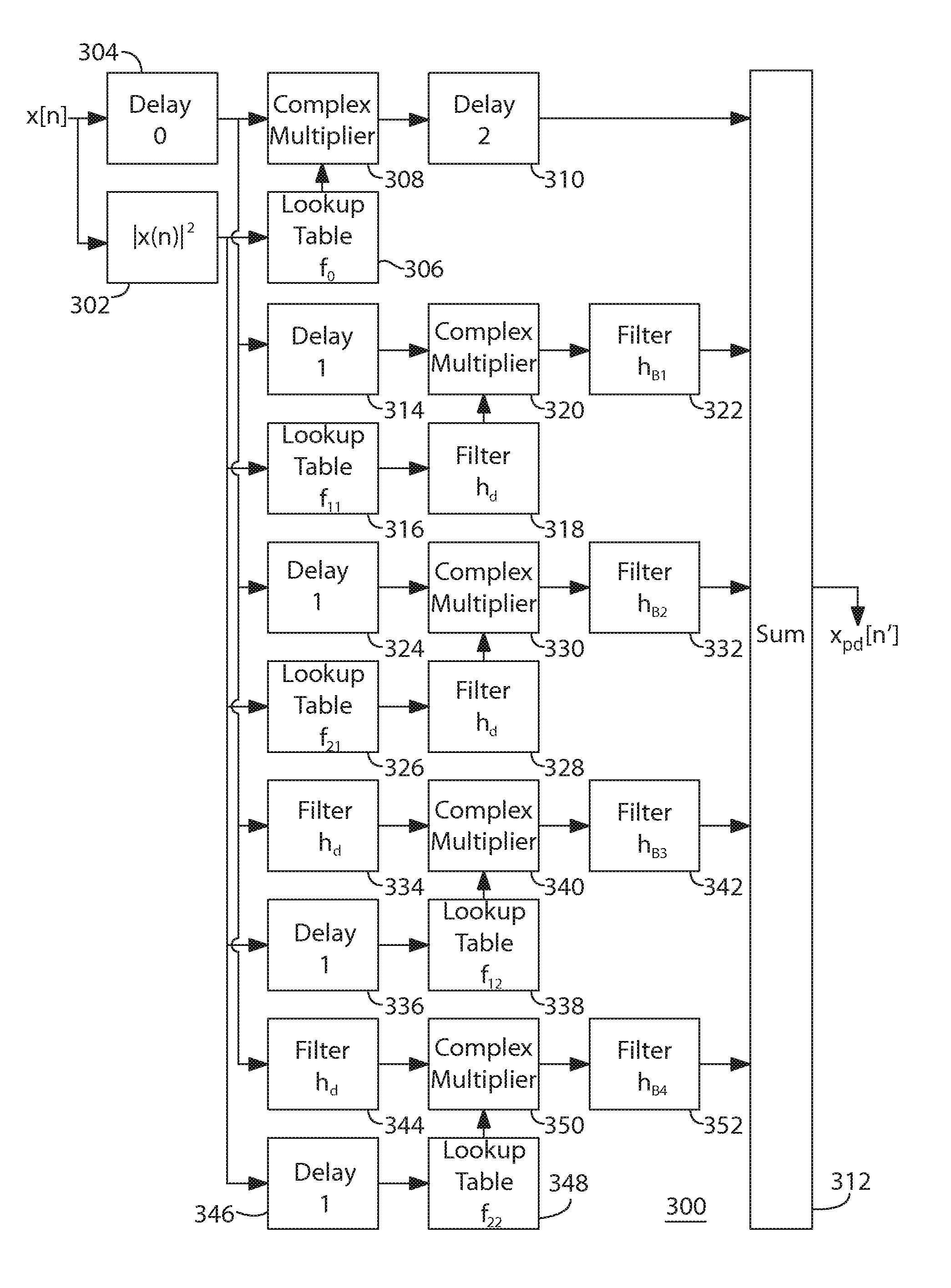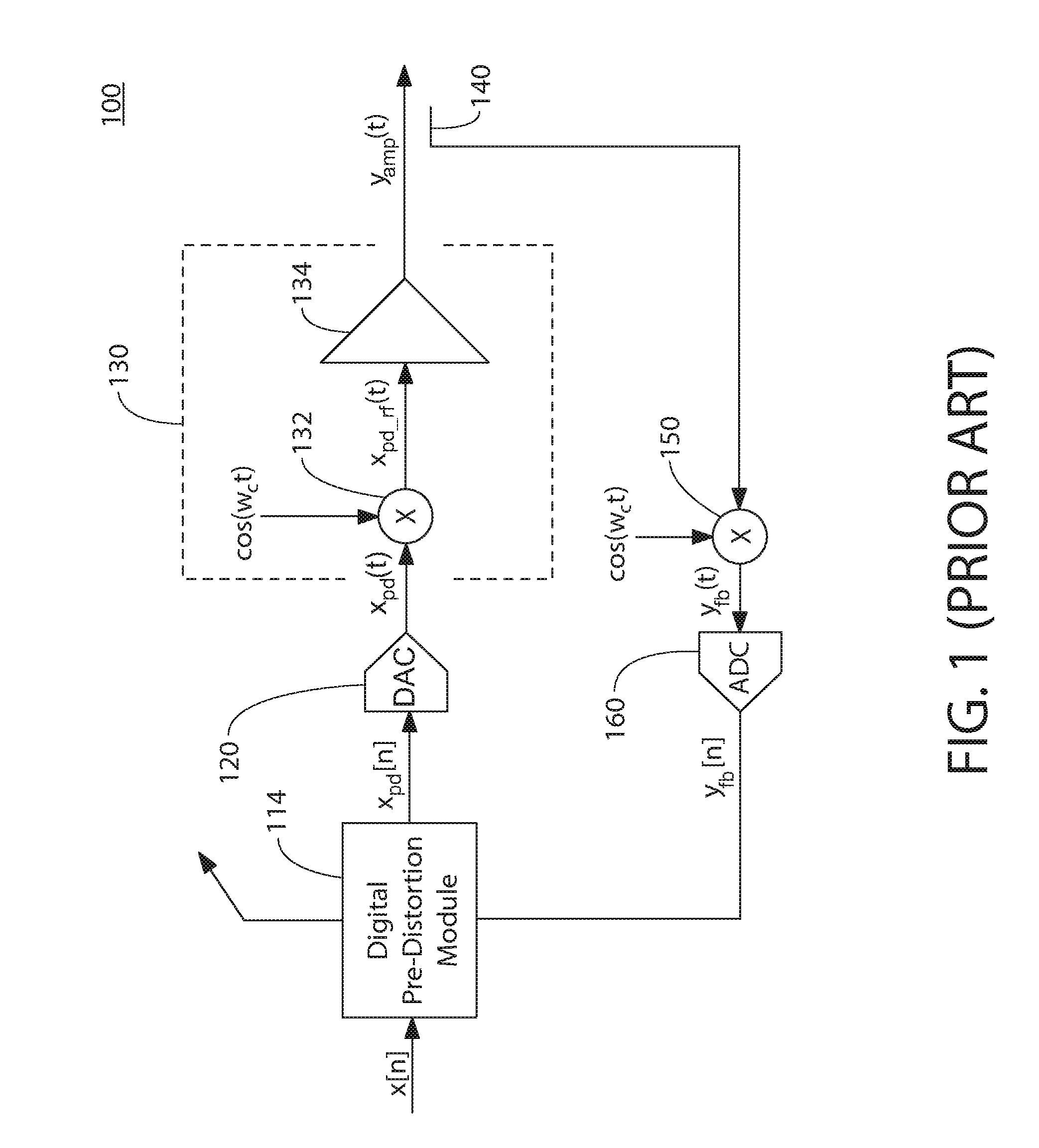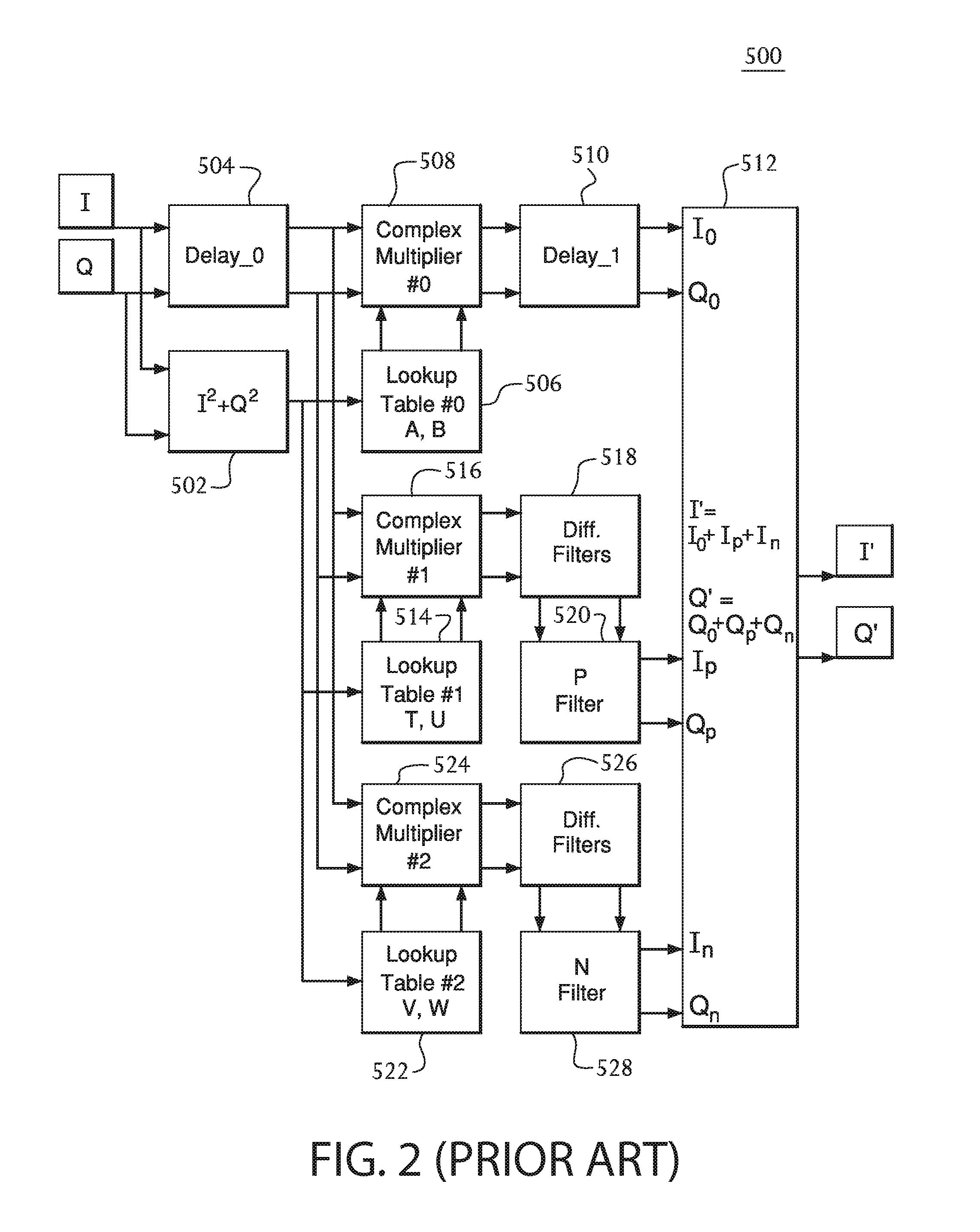Pre-distortion architecture for compensating non-linear effects
a non-linear effect and pre-distortion architecture technology, applied in the field of signal processing, can solve the problems of pre-distortion architecture and insufficient linearization of certain amplifier designs, and achieve the effect of reducing the distortion in the output signal
- Summary
- Abstract
- Description
- Claims
- Application Information
AI Technical Summary
Benefits of technology
Problems solved by technology
Method used
Image
Examples
Embodiment Construction
[0044]FIG. 3 shows a block diagram of a digital pre-distortion architecture 300 according to one embodiment of the present invention. As in the digital pre-distortion architecture of FIG. 2, digital pre-distortion architecture 300 receives a complex input signal x[n] represented by in-phase (I) and quadrature-phase (Q) components and generates a complex pre-distorted signal xpd[n′] that can be converted into an analog signal by a DAC analogous to DAC 120 of FIG. 1 for application to a non-linear analog sub-system analogous to sub-system 130 of FIG. 1. Note that, although upconverter 132 of FIG. 1 can contribute to the non-linearity of sub-system 130, since most of the non-linearity is generated by amplifier 134, for convenience, the rest of this description refers simply to the amplifier, although the teachings technically apply to the entire non-linear sub-system.
[0045]Like the architecture of FIG. 2, the digital pre-distortion architecture of FIG. 3 represents the inverse of a mod...
PUM
 Login to View More
Login to View More Abstract
Description
Claims
Application Information
 Login to View More
Login to View More - R&D
- Intellectual Property
- Life Sciences
- Materials
- Tech Scout
- Unparalleled Data Quality
- Higher Quality Content
- 60% Fewer Hallucinations
Browse by: Latest US Patents, China's latest patents, Technical Efficacy Thesaurus, Application Domain, Technology Topic, Popular Technical Reports.
© 2025 PatSnap. All rights reserved.Legal|Privacy policy|Modern Slavery Act Transparency Statement|Sitemap|About US| Contact US: help@patsnap.com



